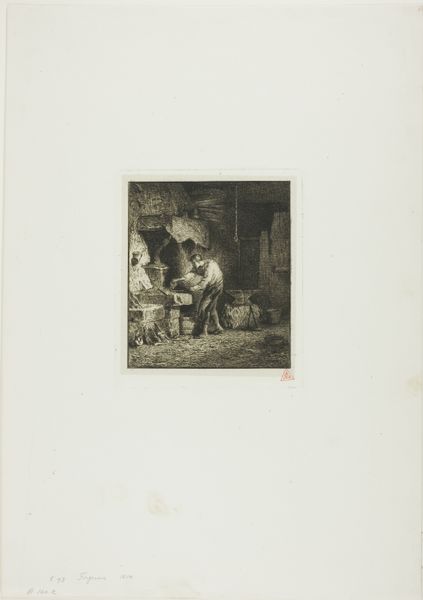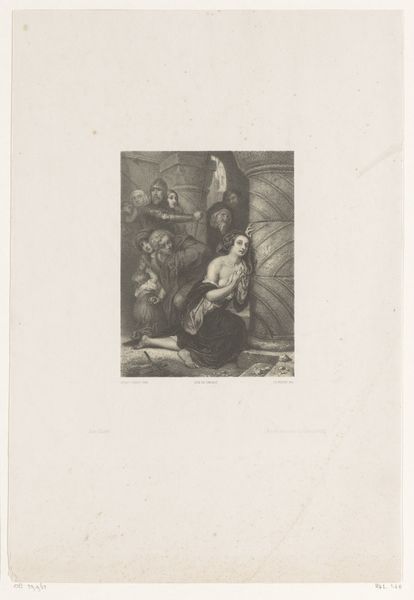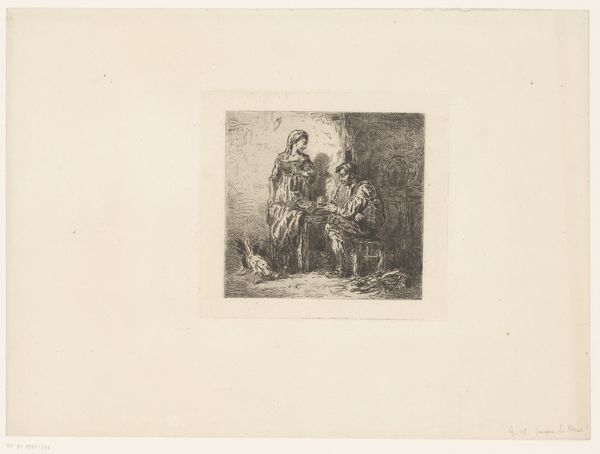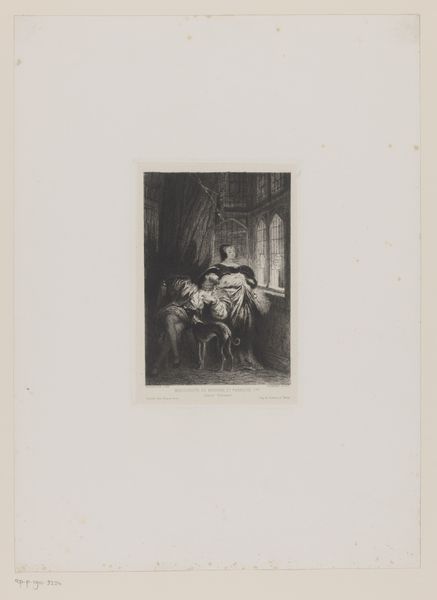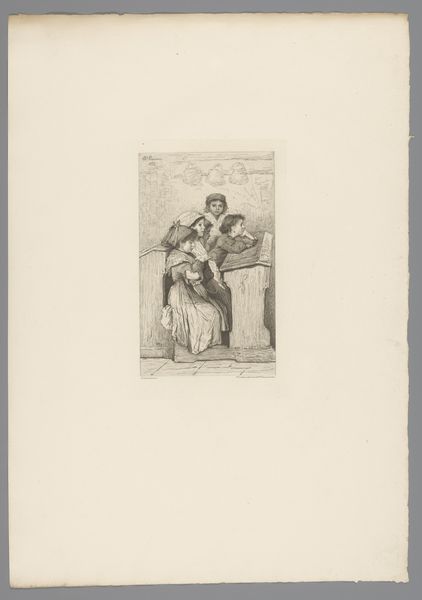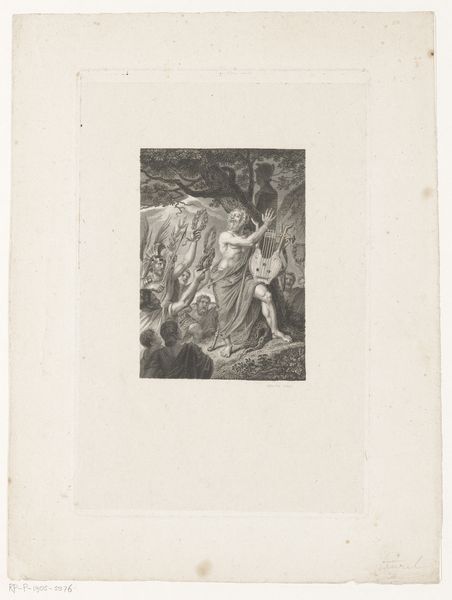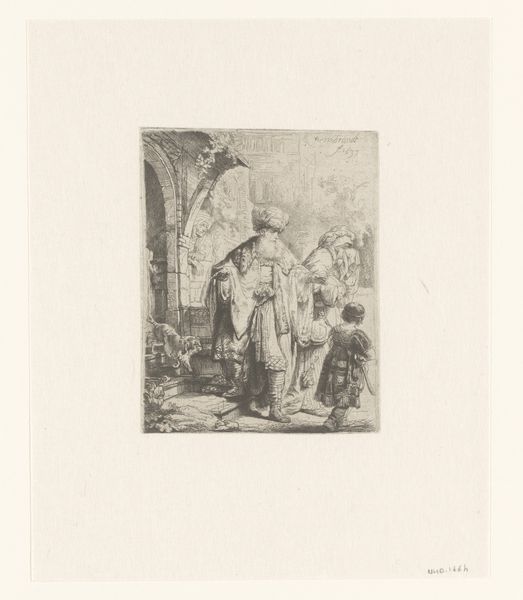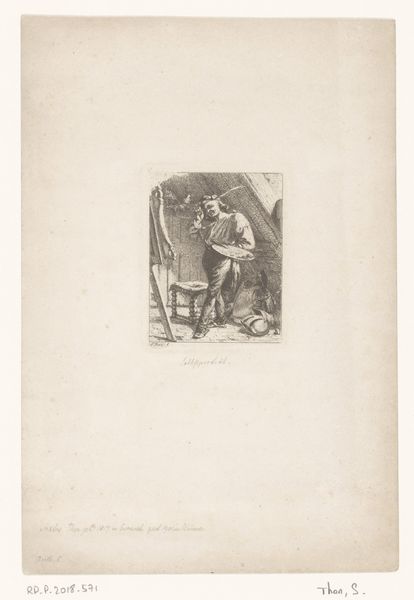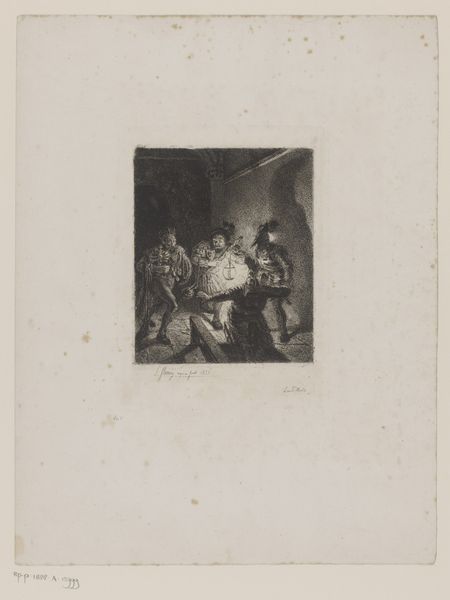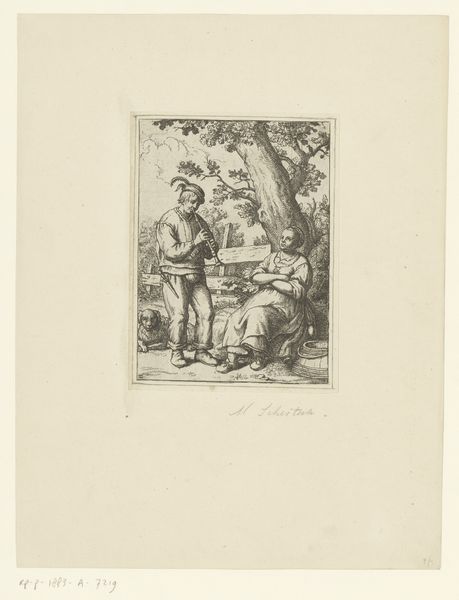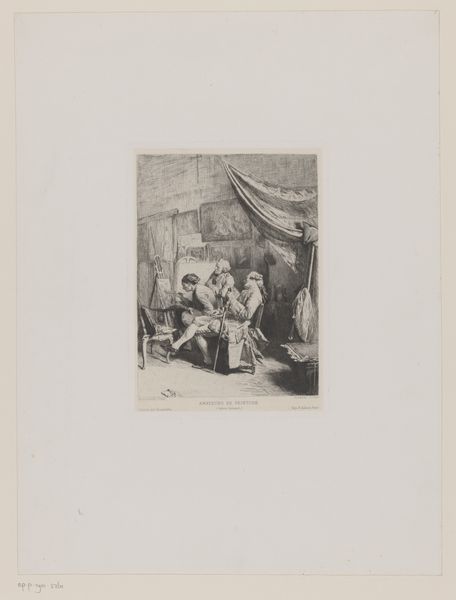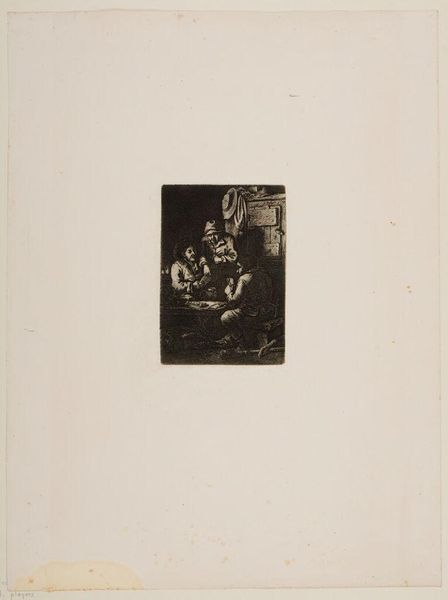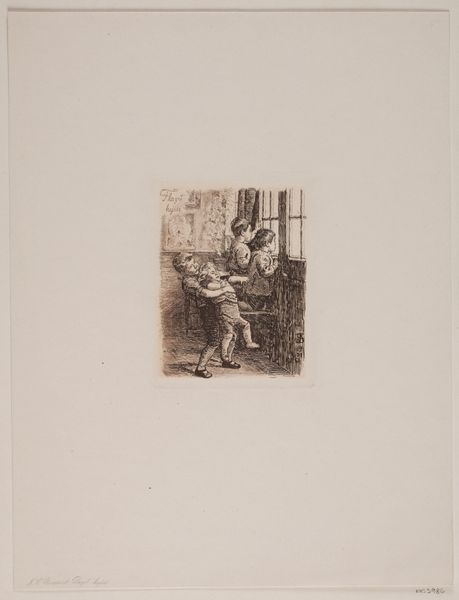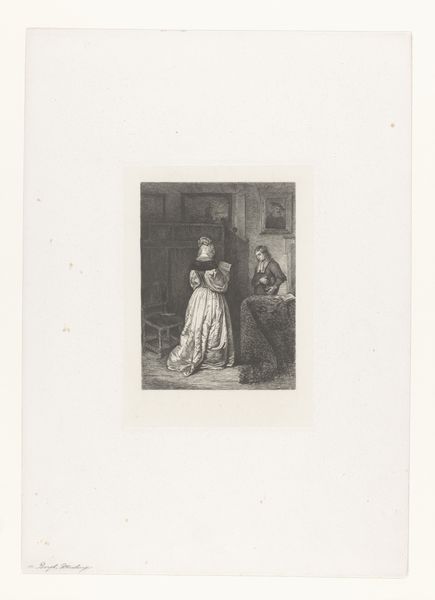
drawing, print, etching, paper
#
drawing
# print
#
etching
#
paper
#
genre-painting
#
realism
Dimensions: 112 × 87 mm (image); 123 × 94 mm (chine); 125 × 95 mm (plate); 320 × 245 mm (sheet)
Copyright: Public Domain
Charles Jacque made "The Knife-Grinder," an etching, using a metal plate to transfer an image onto paper. Here, the fineness of the etched line creates the scene. The composition shows a tradesman at work. A child looks up at him, perhaps his own, making the scene intimate. Jacque’s choice of printmaking is particularly well-suited to this subject. Etching is a process of labor; scratching away at a surface, line by line. This painstaking approach mirrors the craft of the knife-grinder, and indeed many other trades, in an era when industrial production was on the rise. The image, with its attention to the dignity of labor, elevates the ordinary work of this man. In doing so, it suggests an alignment between Jacque’s artistic practice and the labor of the working class. So, next time you look at a print, consider not just the image, but the process through which it was made. This can tell us a great deal about the artist’s social concerns.
Comments
No comments
Be the first to comment and join the conversation on the ultimate creative platform.
